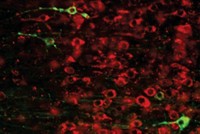Advertisement
Grab your lab coat. Let's get started
Welcome!
Welcome!
Create an account below to get 6 C&EN articles per month, receive newsletters and more - all free.
It seems this is your first time logging in online. Please enter the following information to continue.
As an ACS member you automatically get access to this site. All we need is few more details to create your reading experience.
Not you? Sign in with a different account.
Not you? Sign in with a different account.
ERROR 1
ERROR 1
ERROR 2
ERROR 2
ERROR 2
ERROR 2
ERROR 2
Password and Confirm password must match.
If you have an ACS member number, please enter it here so we can link this account to your membership. (optional)
ERROR 2
ACS values your privacy. By submitting your information, you are gaining access to C&EN and subscribing to our weekly newsletter. We use the information you provide to make your reading experience better, and we will never sell your data to third party members.
Biological Chemistry
Fixing Function In Cystic Fibrosis
Chemical Biology: Targeting cell's protein-processing machinery helps get a flawed channel working
by Carmen Drahl
December 9, 2009
By helping a defective protein reach its destination, researchers have restored some function to lung cells from patients with cystic fibrosis (Nat. Chem. Biol., DOI: 10.1038/nchembio.275). The approach might lead to new CF treatments.
Most patients with CF have a mutation in a chloride ion-channel protein that keeps it from assuming its functional location in the cell membrane. Rather than targeting the faulty channel directly, a team led by William E. Balch of Scripps Research Institute instead focused on protein-processing machinery.
With small molecules, the team blocked histone deacetylase enzymes, which influence gene expression and other events by removing acetyl groups from lysine side chains. In lung cells from CF patients, low doses of one inhibitor, suberoylanilide hydroxamic acid (SAHA), already an FDA-approved drug for cancer, gradually restored about 28% of normal channel function and kept it there for up to 10 days after treatment. The team suggests that the inhibitors shape protein processing by modifying chromatin, which stops cells from treating the channel as a defective intruder. They are still working out the mechanism.




Join the conversation
Contact the reporter
Submit a Letter to the Editor for publication
Engage with us on Twitter